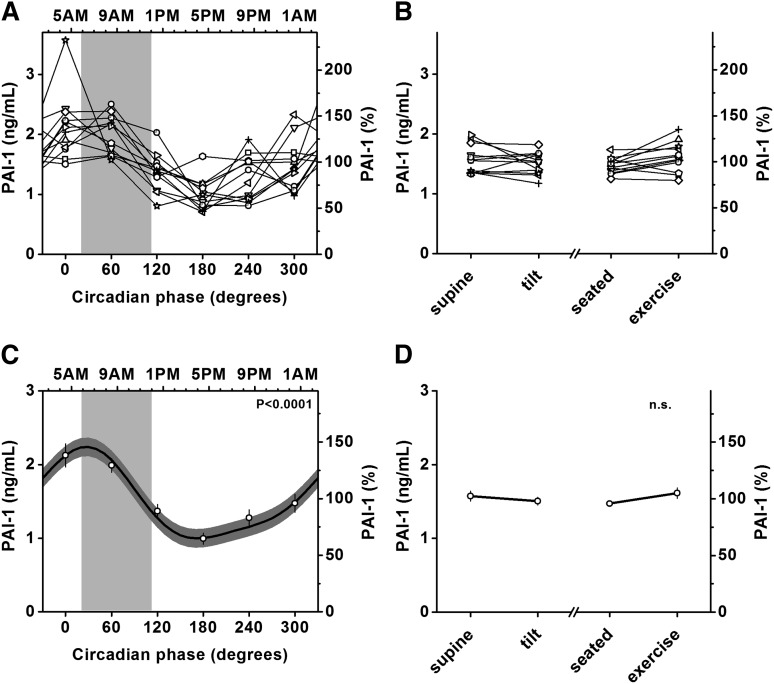Figure 1.
Presence of endogenous circadian rhythm (independent of behavioral effects) and absence of significant effect of behavioral stressors (independent of circadian effects) on PAI-1. PAI-1 had a significant endogenous circadian rhythm with the circadian peak corresponding to approximately 6:30 am, at the beginning of the vulnerable time of 6 am to noon (light gray bars in A,C). The behavioral states, including head up tilt and exercise, had no significant effect on PAI-1 (B,D). There were no statistical interactions between the circadian and behavioral effects. Panels A and B show individual data, while panels C and D show group analysis. Cosine models (black lines) and 95% confidence intervals (dark gray areas) are based on mixed-model analyses and use precise circadian phase data. To show that these models adequately fit the actual data, we also plot average data grouped into 60-circadian-degree windows with error bars representing standard error of the mean. Data are normalized according to each individual’s average across the FD protocol. Bottom x-axes (A,C), circadian phase with 0° indicating the timing of the fitted circadian core body temperature minimum (average ∼4:30 am in these participants); bottom x-axes (B,D), behavioral states; top x-axes (A,C), corresponding average clock time in these participants; right y-axes, percentage of each individual’s mean across the protocol; left y-axes, absolute values; light gray bars (A,C), most vulnerable period for adverse cardiovascular events observed in epidemiologic studies (∼6:00 am to noon). P values, significance of circadian effect from cosinor analyses.

